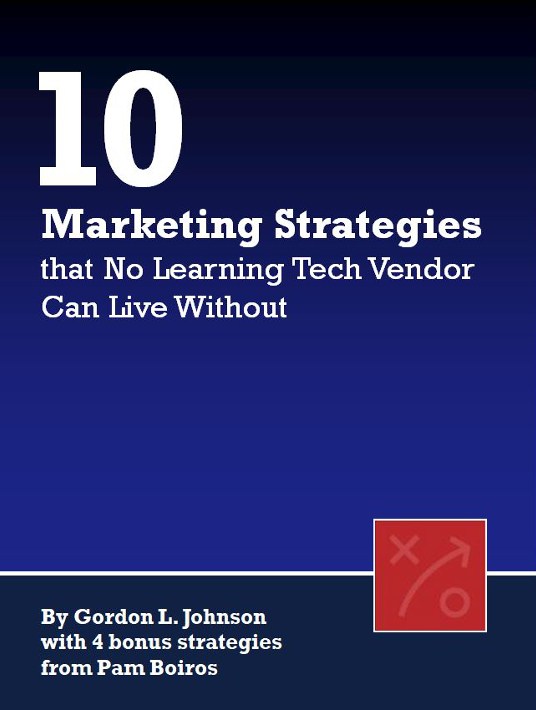Focusing Only On Quality Leads Is A Make Or Break LMS Marketing Strategy
“Why don’t you follow up on the leads we send you?” says the Director of Marketing. “Why don’t you send me better leads?” says the Sales Manager. It’s a perpetual argument and is unwinnable. Usually, neither person is 100% right. Even though I’m a marketer, I tend to side with the salesperson on this one. As marketers, we sometimes fall into the “must get more leads” trap. We sometimes feel powerless over many things in the company, but we have much more control over the number of leads we generate. So, whether we like it or not, our compulsion is to use LMS marketing to get more and more leads. And this almost always generates mediocre leads.
Here are some tips to help you resist the powerful urge to focus your efforts on more leads and concentrate on quality.

Developing ‘Qualified Lead’ Criteria
What is your definition of a sales qualified lead (SQL)? Is it someone who visits your website repeatedly or signs up for your email newsletter? Are you trying to attract small to midsize companies who want a scalable LMS or larger organizations that require a robust platform right off the bat? You must be able to clearly identify your niche market and target consumer before generating leads. Otherwise, you may end up with leads that are mildly interested in your product and too early in the sales process, instead of fewer qualified leads that are actually looking for what you have.
Understanding Your Sales Cycle
Most marketers understand generic sales cycles. However, you need to personalize the buyer’s journey as it relates to your product or service, as well as the consumer’s needs and pain points. For example, many buyers start by learning about your learning technology and what it can offer them. Then they transition into the evaluation phase, where they size up the competitors and determine if your product is worth the investment. But you must consider how this cycle applies to your company and then personalize your approach. For instance, there may be a step in between your LMS marketing strategy that encourages prospects to make the move from building awareness to evaluating specific products, such as a ‘consultancy’ phase wherein you follow-up with interested buyers to appease any concerns or provide personalized recommendations.
Using Opt-Ins To Identify Hot Leads
Generally, only leads who are truly interested in what you're offering will provide contact information. For instance, fill in their email address, name, and other basic details in order to download your white paper or an eBook. Opt-ins can help you sort those who are only mildly intrigued by your software from those who are good prospects. Plus, opt-in forms help you build a marketing list that contains qualified leads, making the follow-up process more productive. You can also create other hurdles that narrow down the list of potential buyers. For example, lead-scoring with marketing automation software, or you make it so your site visitors must apply for a free trial or demo or schedule a consultation with your sales team.
Attracting Qualified Leads With The Right Content
Content LMS marketing often takes time to generate leads. But these leads tend to be more qualified, as they’re taking the time to seek out specific information. For example, someone who reads your latest ‘Cost-saving Benefits of Investing in an Extended Enterprise LMS’ is probably already interested in what you have to offer. They’re at the point where they just need a little nudge to include you in an RFP. Content marketing also provides a valuable resource for customers who are already using your product. They can learn how to maximize its functionality, and then pass the article along to their colleagues; thereby, generating more qualified leads thanks to virtual word-of-mouth advertising.
Tracking Site Stats
Analytics tell you which web pages are seeing the most action and which content marketing topics are most popular. Thus, you’re able to determine where a visitor is in terms of the sales cycle and you're able to improve your marketing strategy based on consumer pain points. For instance, visitors who click on your pricing page are probably closer to sealing the deal, as opposed to those who casually visit your landing page or read a single blog post. You can also determine which topics to expand on in future posts since the content with higher traffic is obviously in demand and attracts your target audience and qualified leads.
Creating An Online Consumer Education Strategy
Leads are more likely to convert into paying customers if they are already familiar with your brand. In many ways, a consumer training program takes care of most of the work for you by educating prospects and promoting your USPs. For example, online tutorials or video demos showcase your product’s features and explain why it stands apart from the competitors. Developing these resources for your LMS marketing may require an investment of time and money. However, it can help you qualify leads before they even meet your sales team. Not to mention, keep current customers well-informed so that they remain loyal to your company.
Too many mediocre leads can become a significant drain on your company. It can stretch salespeople too thin, so they can’t put 100% effort into the most important opportunities. It can also waste your marketing budget and can cause salespeople to lose faith in the marketing team, which means they may not be there when you really need them. I estimate that one great lead is worth about one hundred mediocre leads. So, put together a marketing plan that focuses all of its energy on getting a few great leads and not thousands of leads that waste everyone’s time.
Are you interested in more marketing news and updates? Join our email list and stay informed!
Related articles:
1. 6 Ways To Succeed With A Customer-Centric LMS Marketing Strategy
2. 4 LMS Marketing Strategies That Really Work
3. LMS Marketing: Lead Nurturing – Keep A Close Eye On Who Visits Your Website
4. eBook: 10 Marketing Strategies That No Learning Tech Vendor Can Live Without

